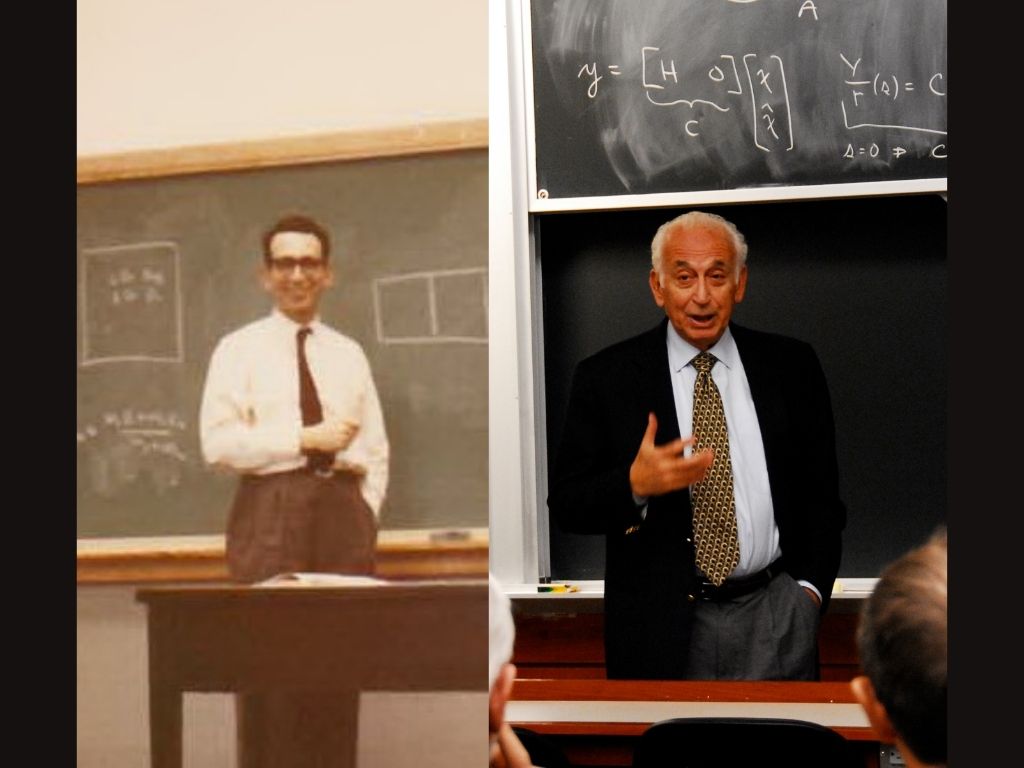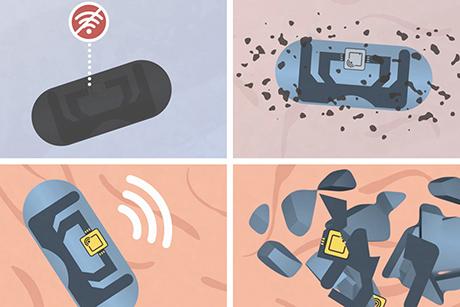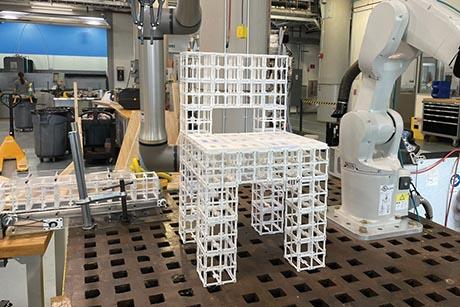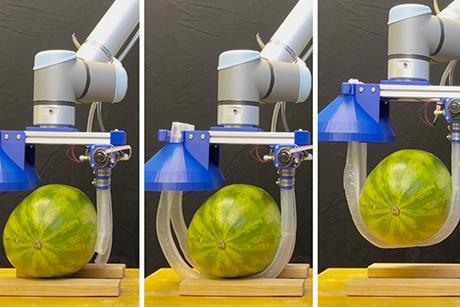Celebrating the life and legacy of George Hatsopoulos
George Hatsopoulos '49, SM '50, ME '54, SCD '56 played many roles in his life. He is perhaps most well known as a thermodynamics expert, inventor, and founder of Thermo Electron Corporation. But at an event hosted by MIT’s Department of Mechanical Engineering in January, Hatsopoulos’ former colleagues, friends, and family reflected on some of the other roles Hatsopoulos played: educator, economist, mentor, role model, advisor, co-worker, and his most cherished roles as husband and father
.
Hatsopoulos showed an affinity for engineering at a young age. As a young boy in Athens, he fantasized about being a great inventor like Thomas Edison. Living in Nazi-occupied Greece in high school, he secretly built radios to listen to updates about the Allied Forces. After graduating from National Technical University of Athens, he enrolled at MIT where he earned a bachelor’s degree, master of science degree, master of engineering degree, and doctorate of science degree in mechanical engineering.
Building upon his doctoral thesis entitled “The thermo-electron engine”, Hatsopoulos founded the Thermo Electron Corporation in 1956. As CEO and Chairman of Thermo Electron, Hatsopoulos turned the company into a global leader in analytical and monitoring instruments. After his retirement in 1999, the company merged with Fisher Scientific to form Thermo Fisher Scientific.
Despite the demands of building and running a business, Hatsopoulos continued to teach at MIT. Fueled by his passion for education and love of fun, he served as senior lecturer in mechanical engineering until 1990.
“You learn a subject more by teaching it than anything else, especially if you teach kids that ask the most unheard of questions that floor you… I [taught] because it was fun. That’s my goal: 80% fun,” Hatsopoulos said in a 2016 interview for the MIT Infinite History Project.
In addition to teaching, Hatsopoulos also served as a lifetime member emeritus of The MIT Corporation.
Hatsopoulos passed away in September 2018 at the age of 91. The celebration of life event in January gave his former colleagues, friends, and family an opportunity to reflect on the impact he had at MIT and beyond.
“He was a businessman at heart that thought like a scientist and philosopher,” his son Nicho Hatsopoulos said at the event. Nicho gave a glimpse into his life at home along with his sister Marina Hatsopoulos SM '93 and mother Daphne, whom he described as Hatsopoulos’ best friend and closest confident.
Walter Bornhorst SM '64, PhD '66 offered a unique perspective on Hatsopoulos as a teacher, boss, and father-in-law.
“George was my mentor. He shaped every aspect of my life, he taught me engineering, he taught how to think, he taught me business and how to make money,” Bornhorst said. “But most importantly he provided me with my wife, Marina, the love of my life.”
During the event, the inaugural recipients of the George N. Hatsopoulos Faculty Fellowship in Interdisciplinary Research and the George N. Hatsopoulos Fellowship for graduate students briefly presented about how their research carries Hatsopoulos’ legacy on.
Graduate student Dionysios Sema, a native of Hatsopoulos’ beloved homeland Greece and the first recipient of the George N. Hatsopoulos Fellowship for Graduate Students, shared his work on advancing state-of-the-art predictive simulations of materials in extreme environments.
Professor Xuanhe Zhao, the inaugural George N. Hatsopoulos (1949) Faculty Fellow, reflected on how his research on continues Hatsopoulos’ legacy.
“I believe we are further carrying the legacy of George here at MIT with this research that can have potential impact on society,” Zhao said.




